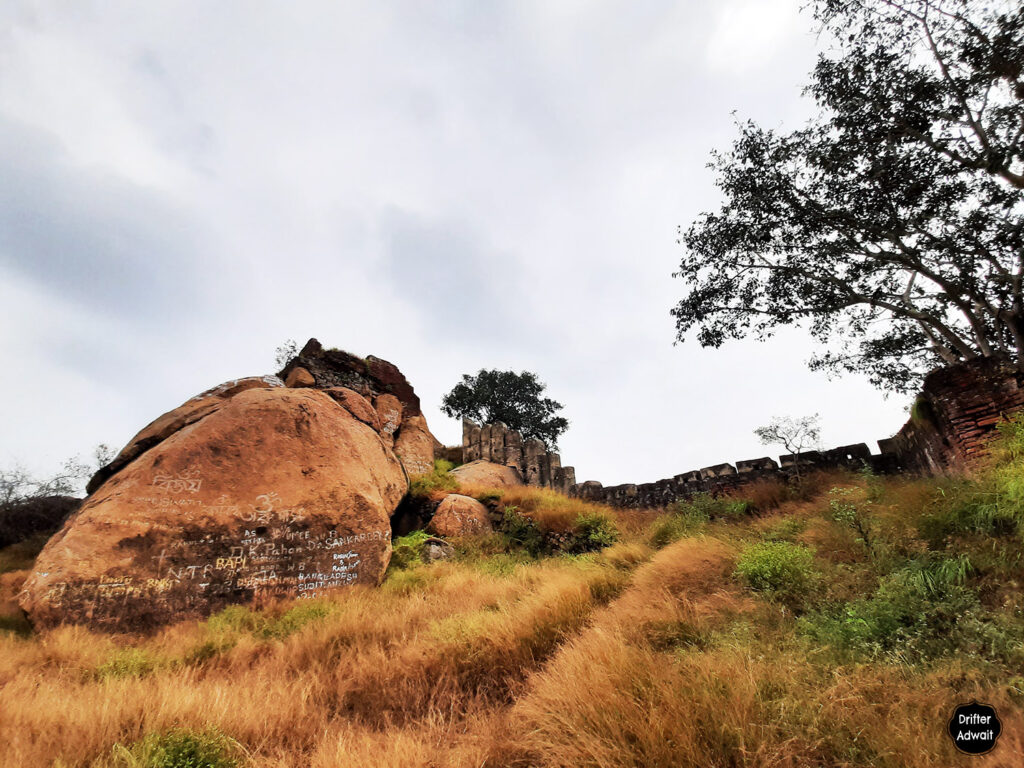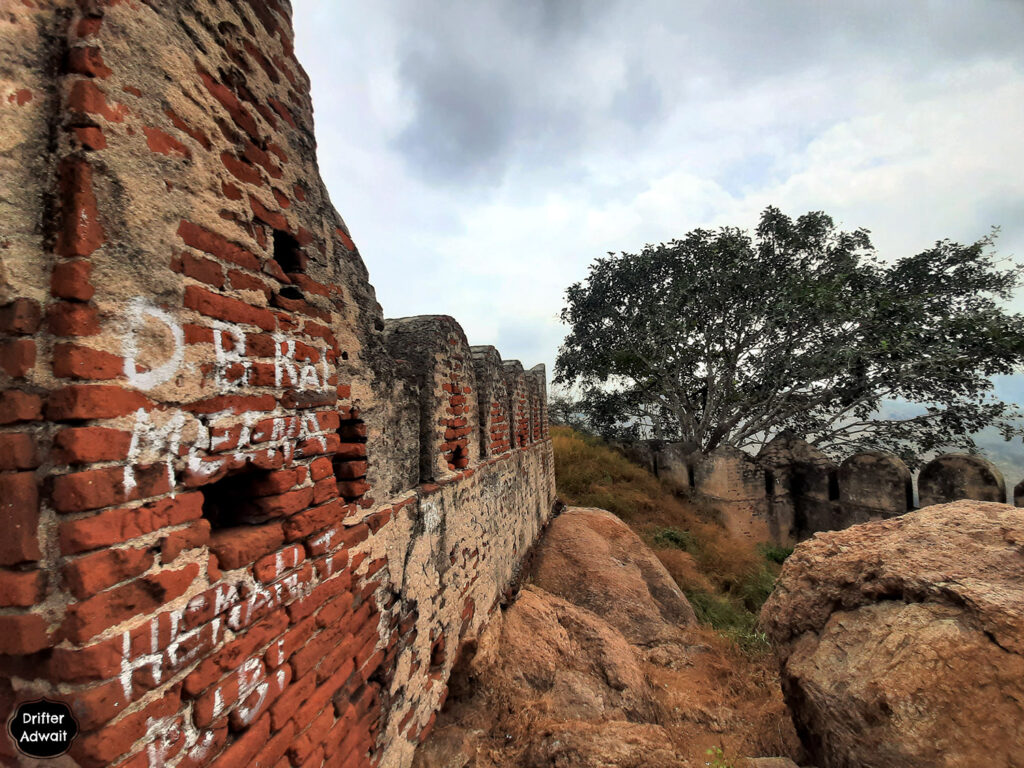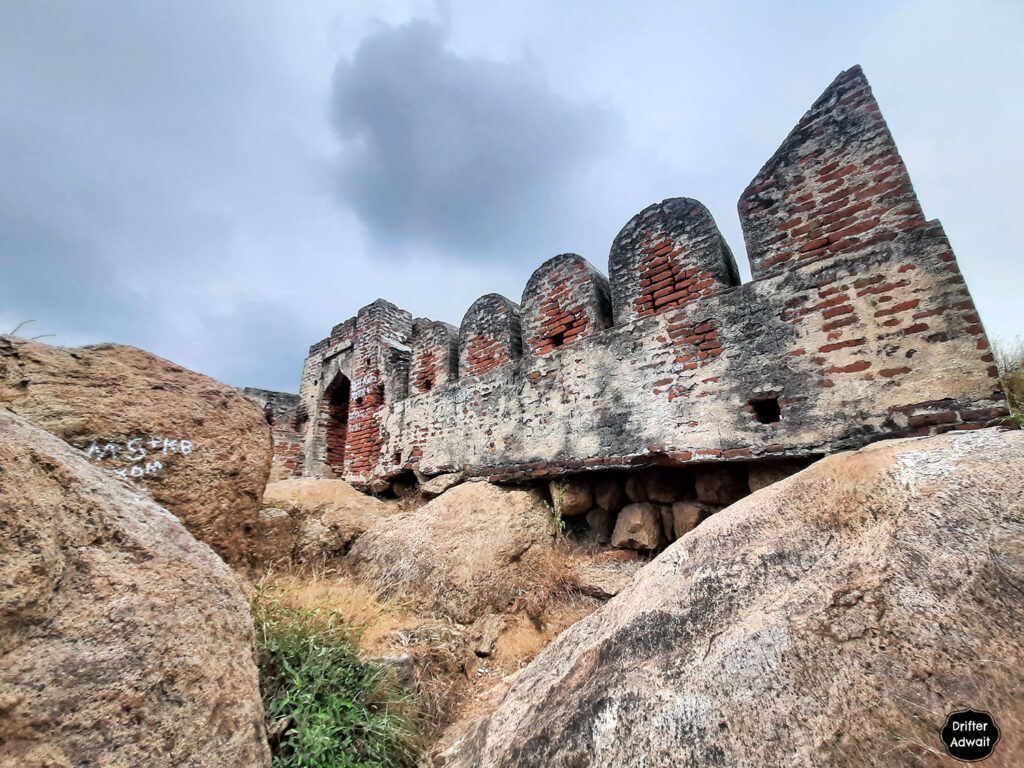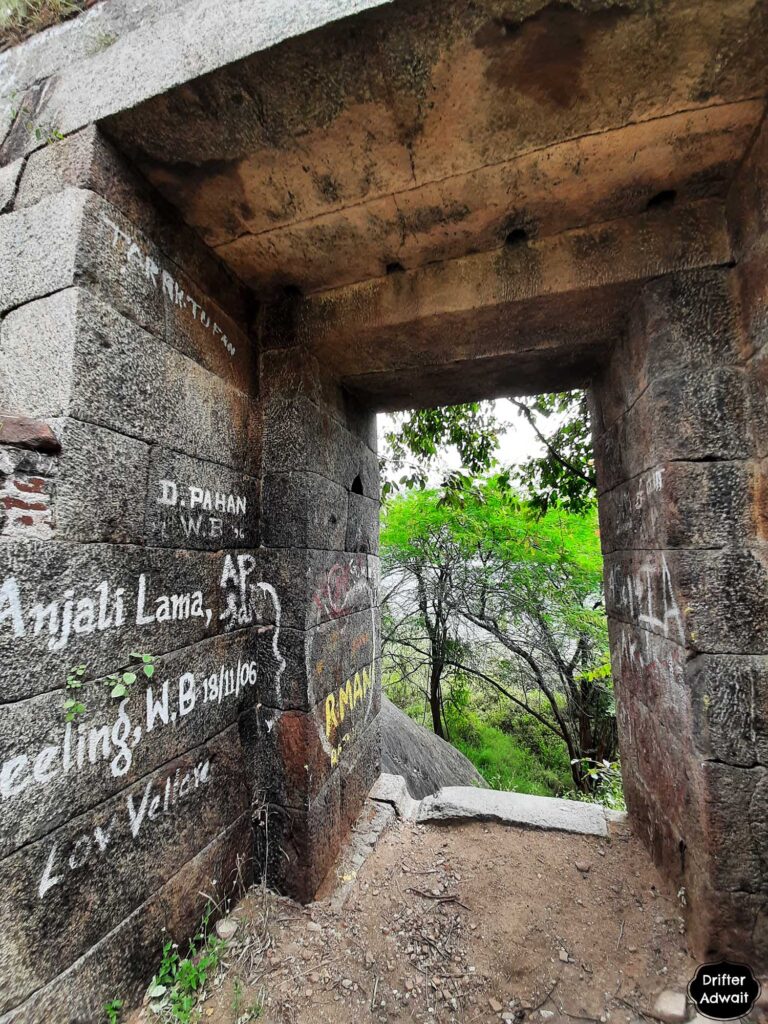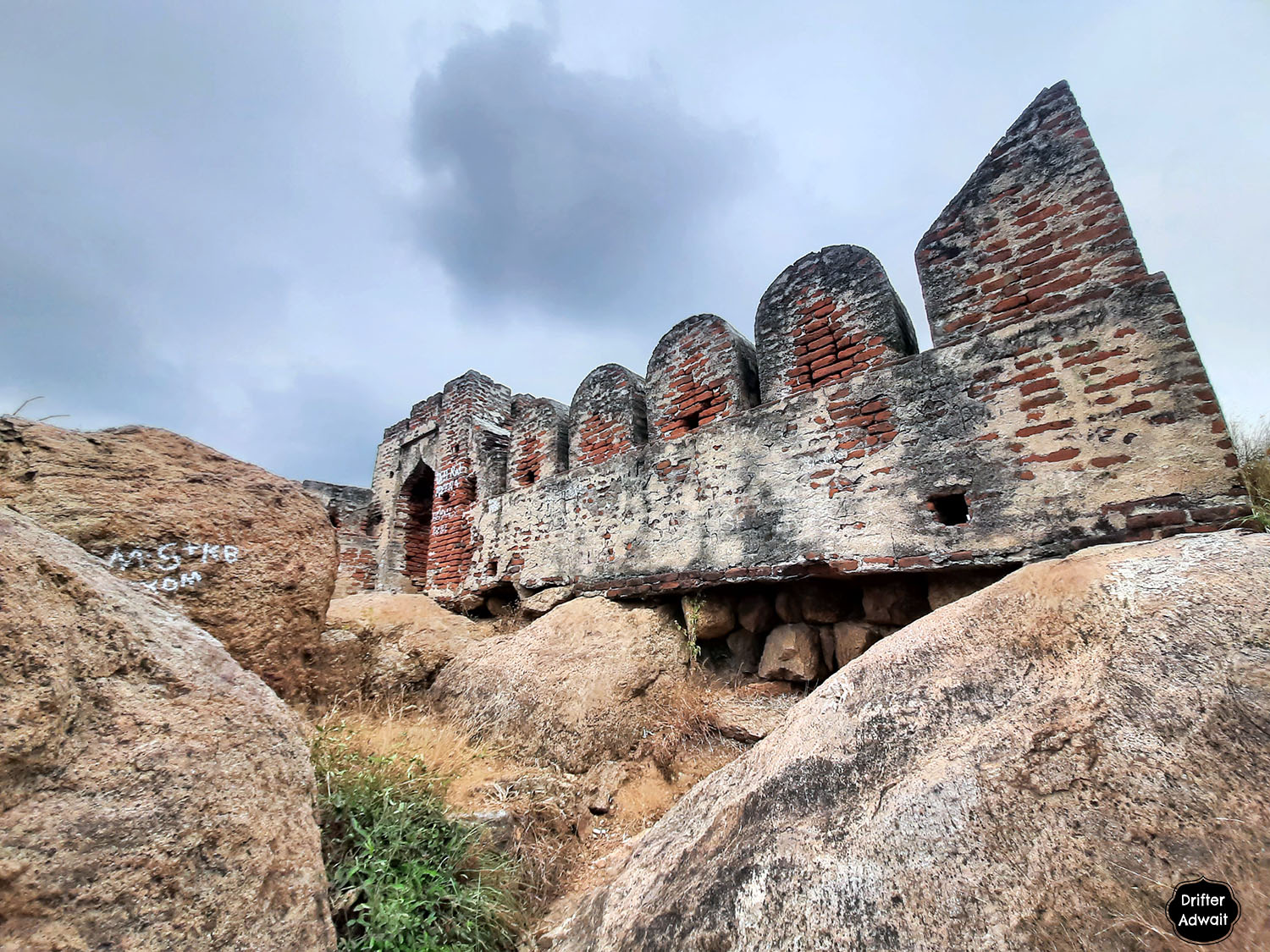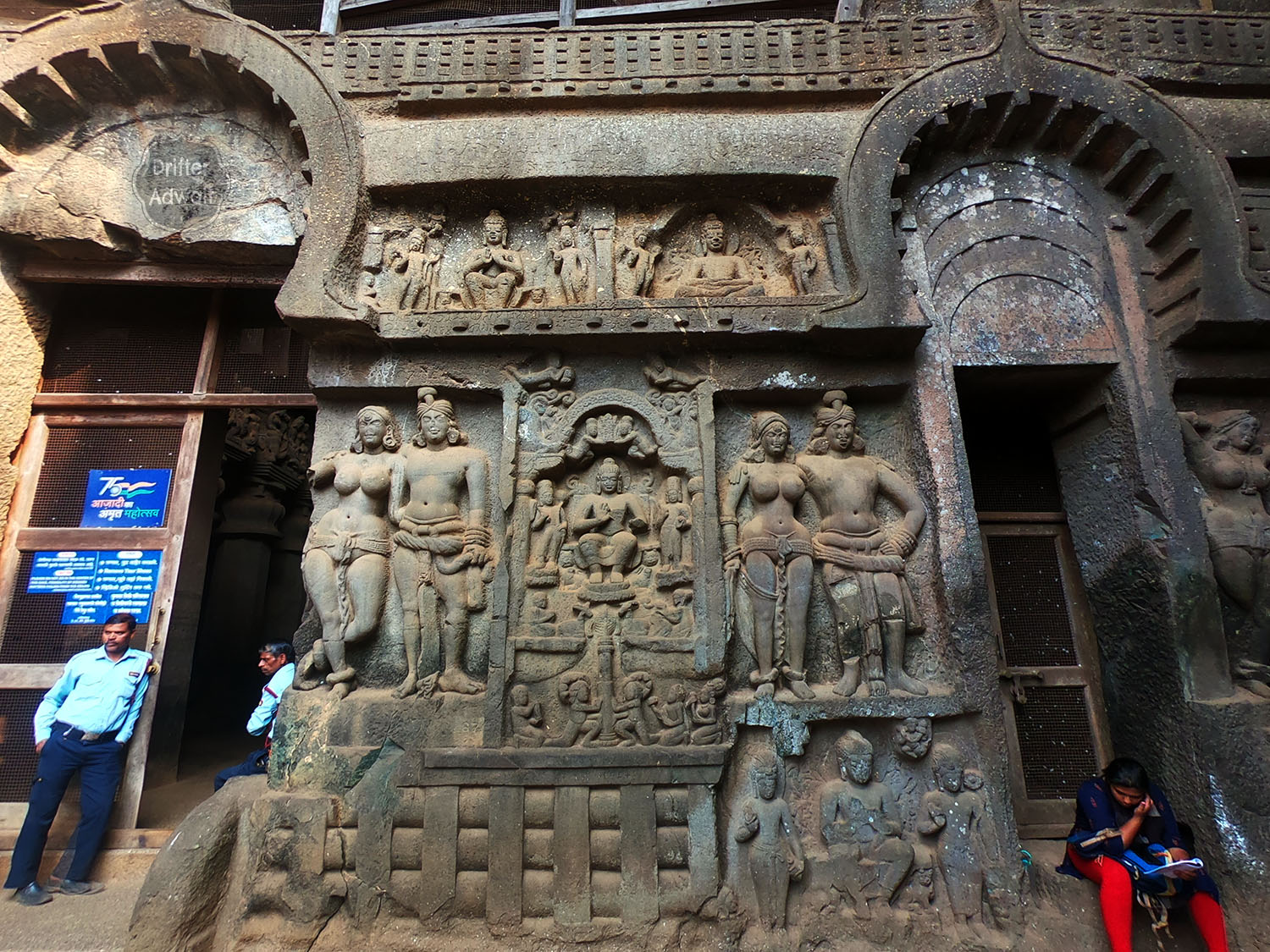Welcome to my travel blog, where I take you on a journey to Fort Sajira in Tamil Nadu, India. This lesser-known fort of Chhatrapati Shivaji Maharaj holds a special place in history, but unfortunately, not many people in South India are aware of its significance. Despite this, Amruta (partner in crime) and I decided to celebrate the special occasion of Shiva Jayanti on this unique fort. Little did we know, we were in for quite an adventure.
As we arrived at our destination, we quickly realized that not even the locals knew much about this historic fort. From the hotel owners to the temple priests and even the people in charge at the Vellore ASI museum, no one seemed to recognize the names Sajira and Gojira. With no other options, we turned to our trusty friend Google maps to guide us through this unknown territory.
What followed was a hilarious and unforgettable experience that I can’t wait to share with you. Join me as I recount our journey to Fort Sajira, where we navigated our way through the unknown and discovered a hidden gem in the heart of Tamil Nadu.
Dakshin Digvijay of Chhatrapati Shivaji Maharaj:
On an auspicious day of Dasra, dating 6th October 1676, Chattrapati Shivaji Maharaj marched out of the Raigad Fort, accompanied by 25000-foot soldiers and a cavalry of 40000, with his legendary Sword Bhavani, pointed towards Southern India. Reaching to Adilshahi region, he divided his army, giving one part to his Chieftain Hambir Rao Mohite, who attacked Adilshahi. After few days, out of nowhere, Chhatrapati Shivaji emerged near Bhaganagar with half of the Army and crossing the Adilshahi region in between. Till this date, no one knows, nor is a documented evidence for how exactly he traveled with so many men without being noticed.
Staying for one month in Bhaganagar, enjoying the hospitality of Kutubshaha, he made a deal with Kutubshaha concerning the distribution of the area to win over. Kutubshaha helped him with his most advanced artillery support along with four thousand foot soldiers and one thousand strong cavalries.
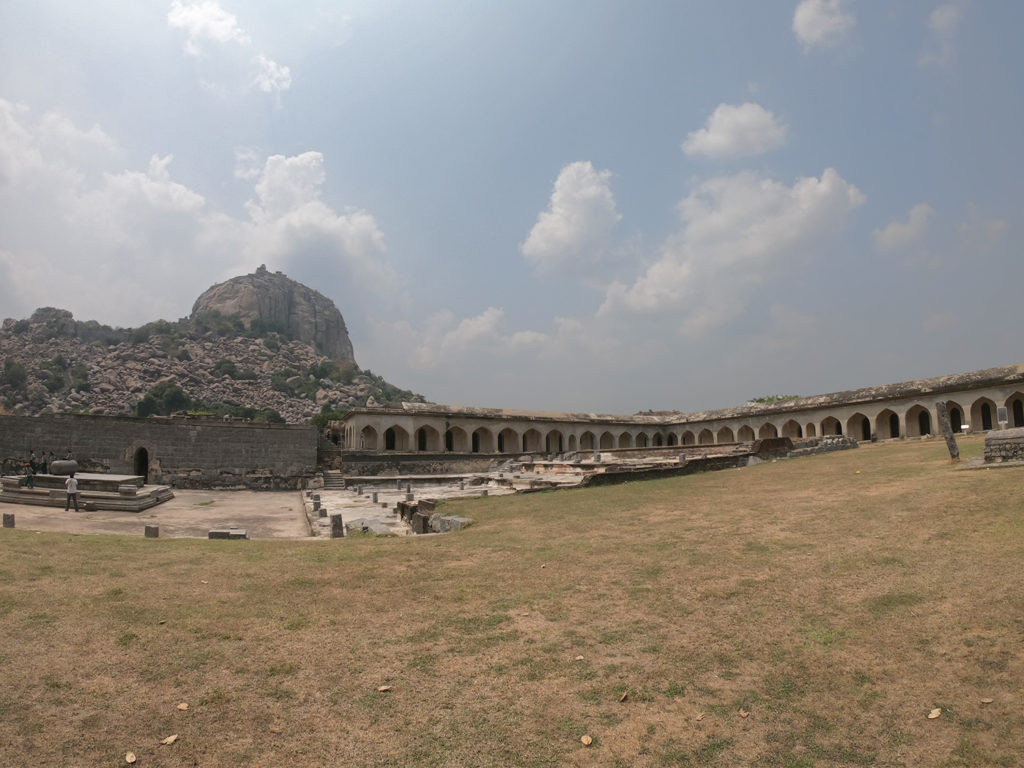
Just like a hot knife cutting through butter, this invincible army started winning over the southern region, winning the most impregnable fortress in India – the fort of Ginji. After winning over Ginji, this army surrounded the legendary fortress of Vellore.

Krushnaji Anant Sabhasad was a contemporary of Chhatrapati Shivaji Maharaj, working in the Maratha courts, who has written detailed accounts on the life of Chhatrapati Shivaji. While writing on the siege of Vellore, he writes, ‘there is no other fort like the Vellore on this entire earth. A treacherous trench of overflowing water surrounds it. The water is unfathomable and contains more than then thousand crocodiles. The core of the fort has been protected with four layers of thick fortified walls. Outermost fortification is so wide, that two carts side by side, can easily go along on that wall.’
Ramachandra Neelkanth Bawadekar, also known as Ramachandra Panta Amatya was Imperial Regent to the Maratha court who was renowned as one of the greatest civil administrators, diplomats, and military strategists of the Maratha Empire. During his times, he has written a famous code of civil and military administration, called Adnyapatra. It has the same importance, value, and genius, as that of Kautilya’s Arthashastra.
In the 8th chapter of Adnyapatra, while underlining the importance of forts, he explains, ‘the region where there are no forts, the king should build the forts using a sheer blunt force. And with the help of newly built forts, one must conquer the adjacent kingdoms, and one should expand his territory.”
The best example of this strategy will be the forts Sajira and Gojira.
Around 23rd March 1677, Vellore was besieged by the Marathas. Abdullah Khan, an Abyssinian fort keeper, was a Bijapur chief of great courage, along with five hundred Hashams. Seeing that Vellore doesn’t surrender, Chhatrapati decided to build two forts around Vellore. The forts named Sajira and Gojira in the Tamil region started spitting fire towards Vellore.
Seeing that the siege is consuming precious time, The Chhatrapati appointed a commander named Narhari Rudra along with two thousand cavalries and five thousand infantry under him, to continue with the siege. Handing over the charge of siege to Narahari Rudra, The Chhatrapati went ahead.
Brave Abdullah Khan fought for fourteen months and eventually surrendered on 21 August 1678. Amongst the five hundred soldiers, only a hundred were alive.
We decided to celebrate the special occasion of Shiva Jayanti on this unique fort. The main problem was the Indians’ distaste for history. The history of the Marathas is seen from a different perspective in South India. So not only the hotel owners, temple priests, and the locals out there, but even the people in charge at the Vellore ASI museum were unaware of the names Sajira(Smart)-Gojira(Cute). So there was no choice but to rely on Google maps.
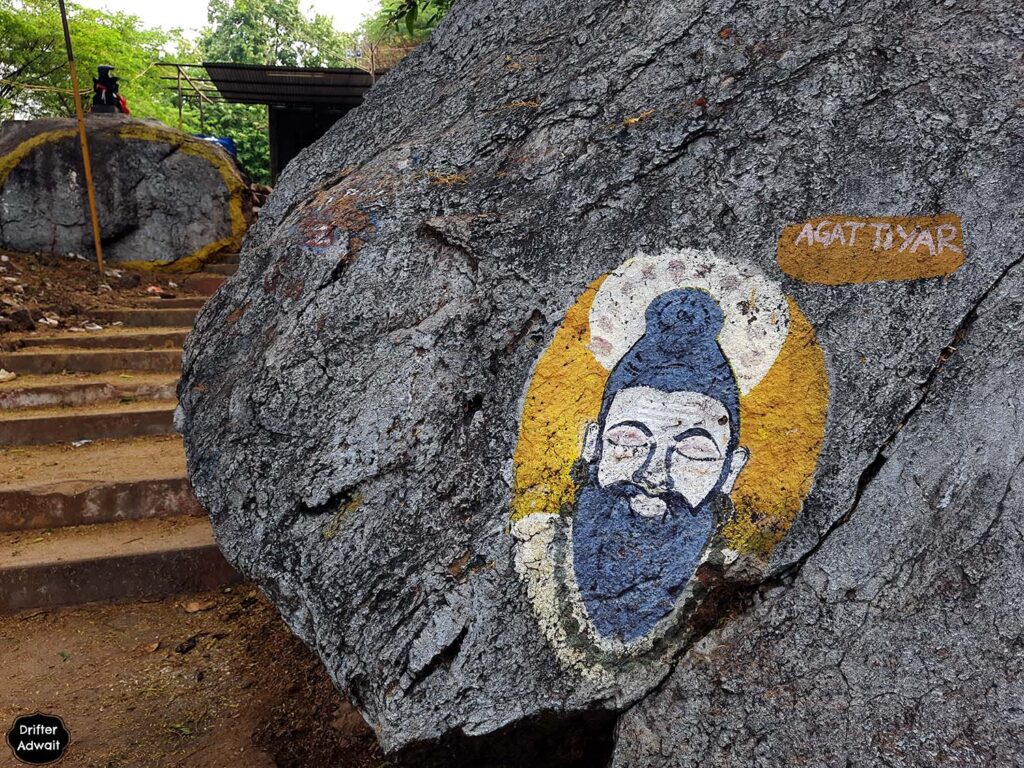
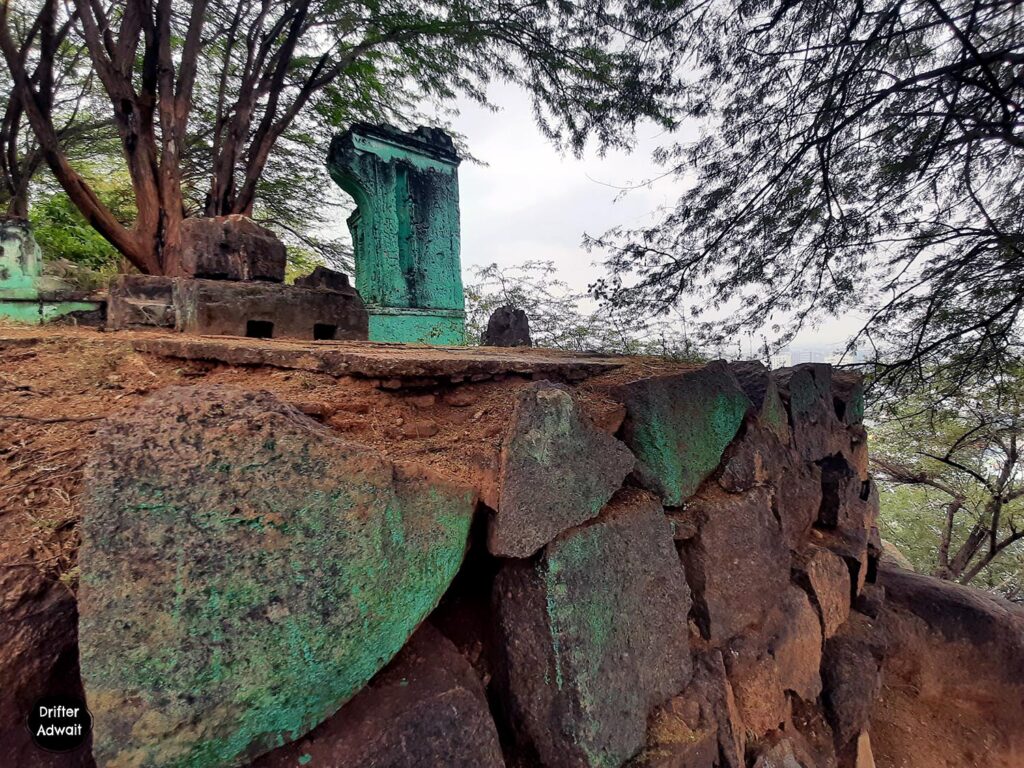
Making our way through the slums of Vellore, jumping through open drainage systems, we reached the base of the fort. At the foot of the hill was a temple of Mariamma, and from there, the road leading to the fort was blocked by the locals with acacia branches. While visiting the temple, I came to know that the fort is closed due to looting and robberies going on the hill.
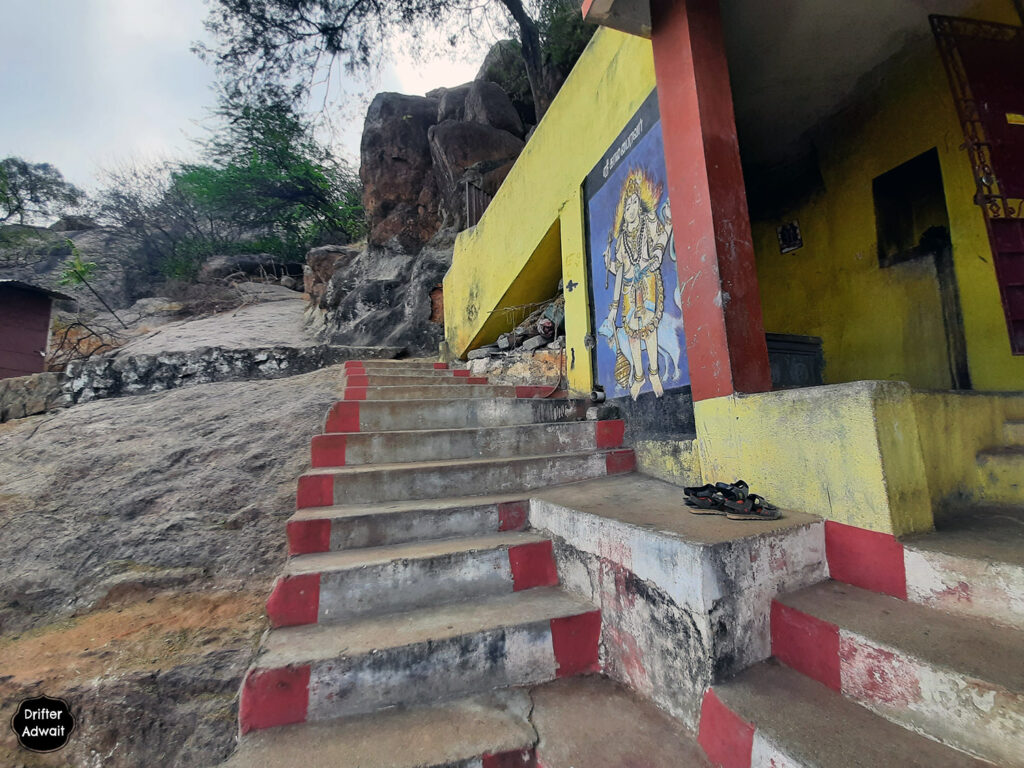
But being the real insane Marathas, we went ahead anyway. With the name of Shivaprabhu, and ignoring the temple priest, putting aside the fear of snakes and robbers, we both entered the crevices. Throughout the year, except for robbers and some unfortunate souls who were robbed, no one has roamed here. So, there was grass everywhere up to our chest. With the help of on and off-trail, dried up streams, and walking on the slippery boulders, somehow, we managed to reach the cliff. The fort was completely immersed in the thick vegetation.
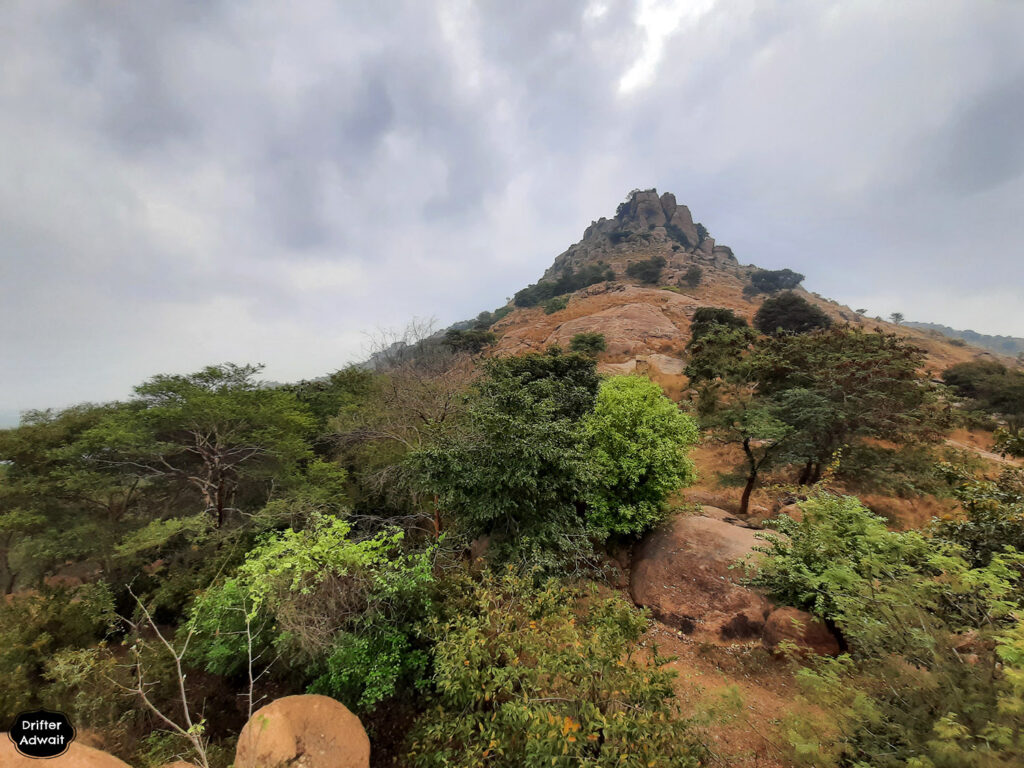
The boulders on the top of the hills looked like someone has deliberately placed them on one another. The Sajira fortification was resembling the Vijayanagarer era walls, with brick construction on it, protecting the archers. Special narrow windows are provided to fire guns. Rectangular door, and holes to block the doors. Few dilapidated buildings and some of the towers were depicting the testament to the heroism of the Marathas. There is a strongly built square-shaped well for the fort, providing water at some time, but now, it was all dried up. From the west bastion, one can keep a close watch on Vellore Fort, the twisting Palar River, and the city. A small but graceful fort.
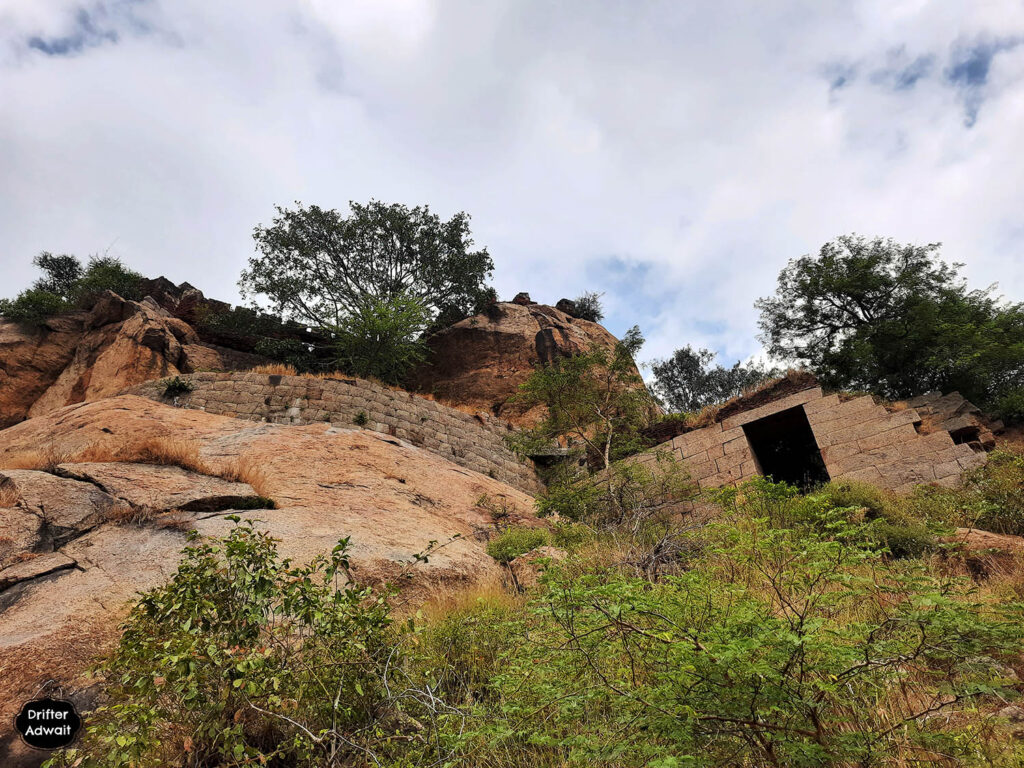
Being alone in that fort with the constant fear of being looted, we decided to descent the fort as soon as possible. While occasionally slipping, missing the road, searching for the dried-up streams, we managed to reach the foothills of Sajira in one piece.
Vellore Fort has a legendary history. It was the home of the first ever-larger scale sepoy mutiny(started on 10th July 1806), 50 years before the first freedom war of 1857. Records show, that Sajra being the strongest hill fort in that area with an abundant water supply, was manned by British troops in 1806 which provided a much-needed strategic depth to British troops, to overcome the mutiny.
The poor condition of the fort was the only thought in my mind while descending. From here, Chhatrapati Shivaji Maharaj must have made plans to expand his Swarajya. Fort’s condition is very bad indeed today. The towers are crumbling and the thick vegetation has conquered the entire fort. Very few people have an idea about the glorious past of the fort, but very few amongst them turn up to see the fort, due to the fear of being looted. It has become imperative for the Maharashtrian tribe to come together and conserve this fort. Conserving this fort will be a true homage to the King who believed that ‘Forts are the essence of the state’.
References:
- Adnyapatra, Written by Ramachandra Panta Amatya, collected by Ramachandra Chintaman Dhere, Padmagandha Publications
- Raja Shivachhatrapati, Volume 2, By Babasaheb Purandare, Purandare Prakashan
- Sabhasad Bakhar, written by Krishnaji Ananta Sabhasad
- The Vellore Mutiny, the first Major uprising of the Indian soldiers of the East India Company’s Army, Paper by Hemant Sane.
